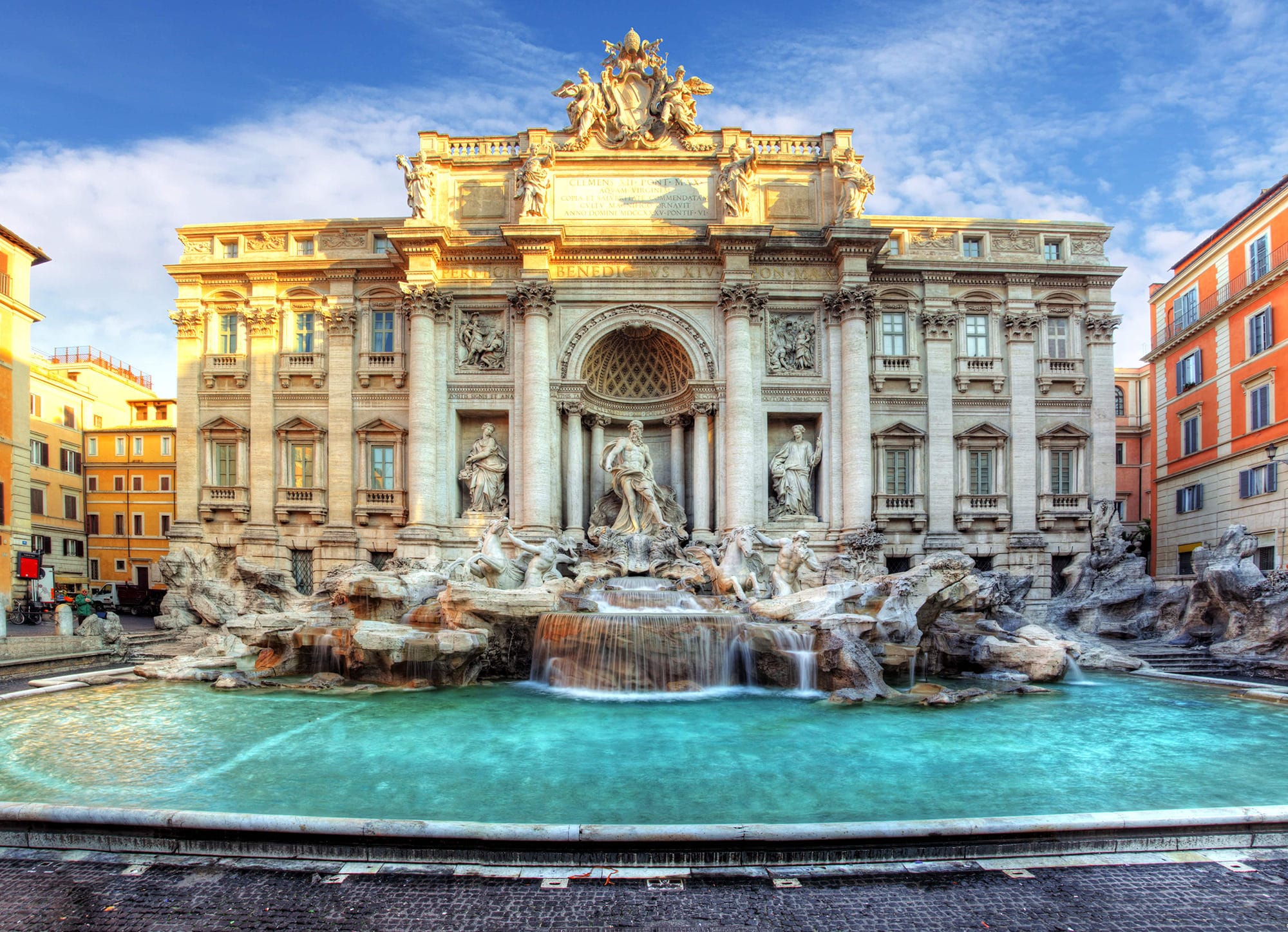The 13 wonder of the world: the Trevi Fountain


The Trevi Fountain is one of the largest and most impressive fountains in Rome if not all of Italy, it was built between 1732 and 1762 and is in Piazza di Trevi, Rome.
LITTLE HINT ON HISTORY
It was built on the facade of Palazzo Pola by Nicola Salvi, a Roman architect (Rome, August 6, 1697 – Rome, February 8, 1751) at the request of Pope Clement XII in 1731. Initially the assignment to create the fountain was won by the French sculptor Lambert-Sigisbert Adam, but later transferred to Salvi. Apparently the change was due to the fact that the Pope did not want to entrust the work to a foreigner, while according another version Adam could not carry on with the project since he had to return to France.
DESCRIPTION: The Trevi Fountain
The theme of the entire work is the sea, represented with several statues in a large rectangular pool with rounded corners, the whole fountain is surrounded by a sidewalk that extends from one side to the other. The same sidewalk is then surrounded by a short staircase below the street square. Salvi has adopted a system of stairs to compensate the difference in height between the two sides of the square: in fact, the left side (the side facing the Quirinal hill) is so much higher than the other side that it needs stairs to straighten it.
On the side of the main arch, above the two walls, there are two bas-relief panels depicting the approval of Agrippa by Giovan Battista Grossi. Andrea Bergondi (above the statue of health) shows the soldiers the “virgin” of the spring water. The fountain is also decorated with many marble elements depicting plant species: we can recognise caper plants on the external wall of Palazzo Poli;
wild figs planted on top of the railing; dense bushes; a prickly pear and four buds. Ivy, peat and lake reeds, oak trunks under the statue of health, artichokes, vines with four bunches of grapes, taro floating on the water, figs, lemongrass oil and evergreen plants at the end of the travertine cliffs.
CURIOSITY
Few people know that 1.5 million of euros are thrown into the fountain by tourists every year. However, it is strictly forbidden to collect coins inside the tank. This operation is carried out daily by its maintenance staff, who donate these proceeds to Caritas – a charitable institution.
So, whether the desire entrusted to water comes true or not, the result is positive. A homeless person will have shelter, a needy one will have a hot meal. Have you ever visited this fountain? Have you ever thrown a coin into a fountain? Write it in a comment below!
If you are passionate about the world of art and want to learn more, discover many articles similar to this one on our art blog
Recent Posts
The older you get, the more you appreciate abstract art
[EN] / [IT] Abstract exists Sheet With Overall Curved Abstract Pattern, Anonymous I started experimenting with abstract…
From Teotihuacan to Tenochtitlán: in the National Museum of Anthropology to learn about Mexico
[EN] / [IT] In this new article, I would like to try to recount my…
What would happen if the Met was destroyed? Questions and answers to an artificial intelligence
[EN] / [IT] Destruction and provocation The recent fall and destruction of Jeff Koons' work…
Botticelli is the best version of ourselves
[EN] / [IT] Who does not know Botticelli? Alessandro di Mariano di Vanni Filipepi known…
Fish Magic and the circular journey of the unconscious
[EN] / [IT] BUY THE 'FISH MAGIC' POSTER HERE: Fish Magic by Paul Klee –…
The Joy of Living: a traditional analysis of the last artwork of the year.
[EN] / [IT] Helpless objects being observed This time I decided to be good, playing…